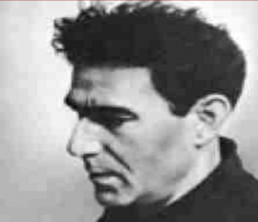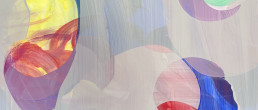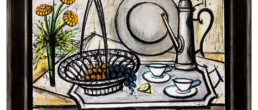Jean-Michel Atlan
1941 (Château-Arnoux-Saint-Auban)
No work available for the moment.
Biography
Jean-Michel Atlan is a French Judeo-Berber painter, originally from Constantine. He left his native Algeria and moved to Paris in 1930, where he studied philosophy at the Sorbonne. He is of extreme left Trotskyite and anti-colonialist political conviction. In 1938, he was professor of philosophy at the Lycée de Laval, then, at the start of the 1939 school year, at the Lycée Condorcet in Paris. From mid-November 1940, he was stripped of the public service by the new rector of the Paris Academy, Jérôme Carcopino, zealously applying the “statute of the Jews”, although this one did not have a decree of ‘application.
He began painting in 1941, before being arrested on June 9, 1942, for his involvement in the resistance and because he was Jewish. He is locked up in the prison of Health, where he escapes the extermination camps by simulating madness. Interned at the Sainte-Anne hospital, he left it at the Liberation. Among his relatives are: Jean Duvignaud (husband of Clara Malraux), Alain Robbe-Grillet and René de Obaldia. In 1944, he devoted himself entirely to painting and exhibited at the Salon des surindépendants in an expressionist style. That same year, in November, he published a collection of poems, The Deep Blood, which he illustrated, and in December 1944 presented an exhibition at the Arc-en-Ciel gallery in Paris.
Atlan met Asger Jorn in 1946, then joined the CoBrA4 movement and moved closer to abstraction. Maeght publishes the work Description d’un Combat by Franz Kafka, whose lithographs in black were made by Atlan. In 1948, he participated in the creation of the CoBrA group. In 1955, he exhibited at the Charpentier gallery in Paris. He was the victim of a hemorrhage in 1959 during an exhibition in London and died on February 12, 1960 of a devastating cancer3, shortly before showing his paintings in New York.
Jean-Michel Atlan found his way in abstract painting after taking the path of expressionism. His compositions are often very close to African art in their choice of colors and shapes. The artist mainly uses oil paints.
He had married Denise Veron, who died on July 1, 2004.
In 1980, he was the subject of a retrospective at the Center Pompidou.






